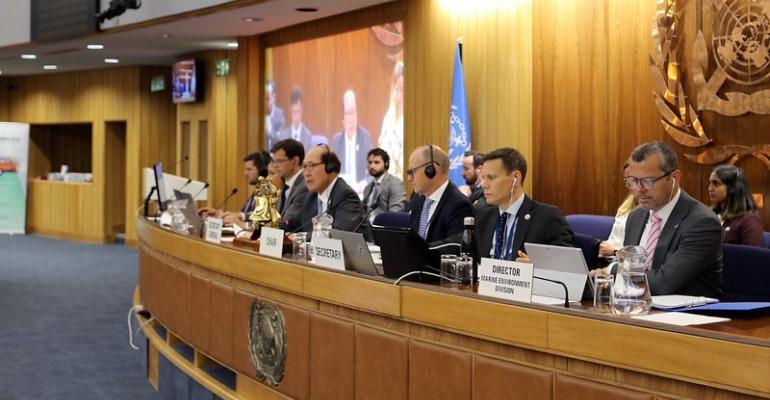On July 7th, the closing day of the Marine Environment Protection Committee 80 meeting and a date that may well become noted in maritime history, the 2023 Strategy was adopted. It sets out plans for a Just and Equitable transition, an entirely new concept, in which expectations will be set against waypoints for greenhouse gas reductions (GHG) of 30% by 2030 compared with 2008 levels, 80% by 2040, with an ultimate target of reaching net-zero emissions as close to 2050 as possible.
Kitack Lim expressed his pleasure, and probably an underlying sense of relief, but warned that the 2023 Strategy is merely a starting point. “The adoption of the 2023 IMO Greenhouse Gas Strategy is a monumental development for IMO and opens a new chapter towards maritime decarbonisation,” he said.
“At the same time, it is not the end goal, it is in many ways a starting point for the work that needs to intensify even more over the years and decades ahead of us. However, with the Revised Strategy that you have now agreed on, we have a clear direction, a common vision, and ambitious targets to guide us to deliver what the world expects from us.
The new more ambitious targets set out in the 2023 Strategy owe much to work carried out by University Maritime Advisory Services (UMAS), the UN High-Level Climate Champions, and the Global Maritime Forum. They have insisted that the uptake of zero or near-zero GHG emission technologies, fuels, and/or energy sources should account for at least 5%, aiming for 10% of energy used by shipping by 2030.
Dr Alison Shaw, Policy Lead at UMAS, noted: “It was far from smooth sailing at the IMO this week. However, member states have now come together to send a strong signal to the shipping sector. While the 2023 IMO GHG strategy falls short of being clearly aligned to a 1.5 degree pathway, it does set expectations for reductions by 2030 and 2040, for the adoption of global measures, and envisions a just and equitable transition.
“The strength of the strategy now relies on both the sector’s response and the forthcoming development of global measures by member states, both of which should be geared to striving for 30% GHG emissions reduction by 2030,” she added.
Copyright © 2024. All rights reserved. Seatrade, a trading name of Informa Markets (UK) Limited.
Add Seatrade Maritime News to your Google News feed.  |

